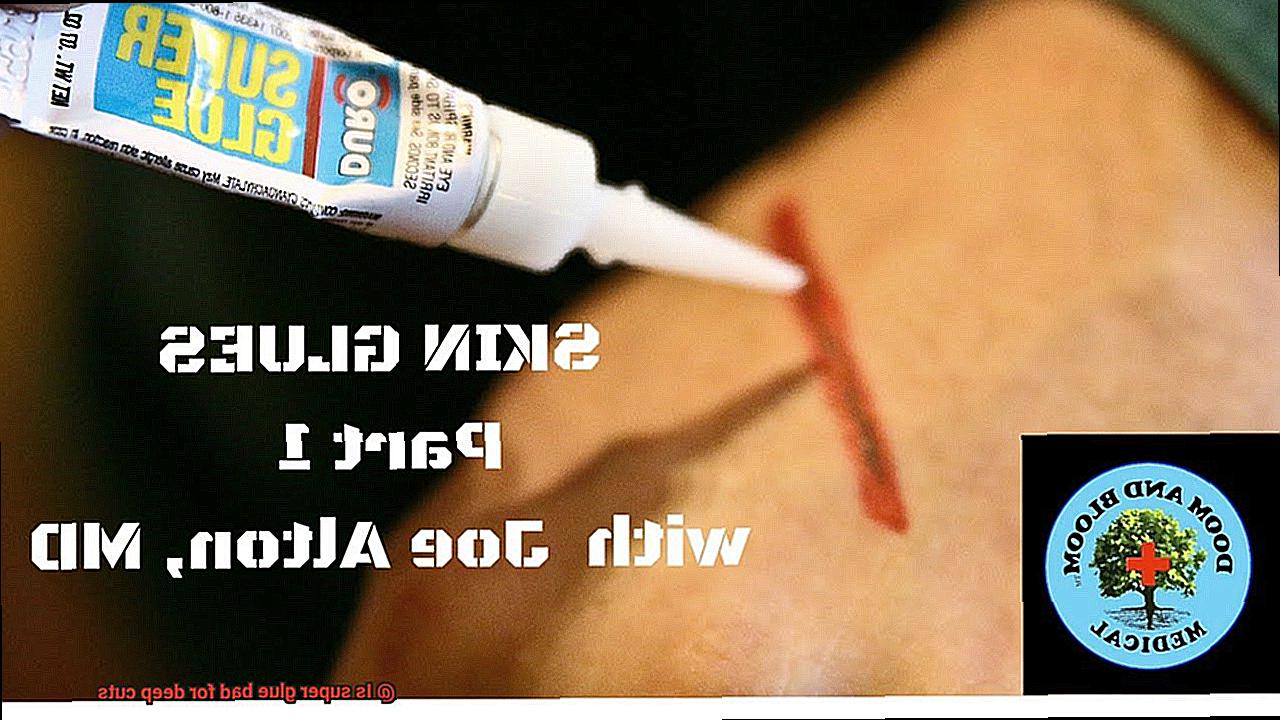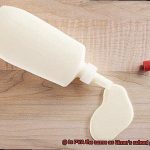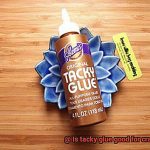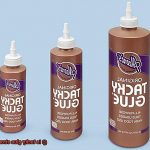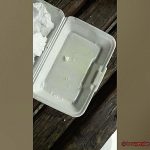When it comes to treating deep cuts, we usually rely on traditional methods like stitches and bandages. But what if I told you that there’s another option gaining popularity? Brace yourself – it’s super glue. Yes, the same adhesive you use for crafts and fixing stuff is now being used to close wounds. Crazy, right?
In this blog post, we’re going to dive into the controversial world of using super glue on deep cuts. We’ll explore the potential benefits and risks associated with this unconventional approach. So get ready to challenge your preconceived notions as we uncover the truth about whether super glue is a friend or foe when it comes to healing those nasty gashes.
Let’s embark on this journey together and separate fact from fiction in the realm of adhesive-first aid.
What is Super Glue?
Contents
Super glue, also known as cyanoacrylate adhesive, is a remarkable adhesive that has earned a reputation for its strong bonding properties and lightning-fast drying time. Originally developed for military use, this adhesive has found its way into households, workshops, and industries around the world.
However, it is important to understand that despite its versatility, super glue is not suitable for every application.
In particular, using super glue on deep cuts is strongly discouraged by medical professionals. Let’s dive deeper into the world of super glue to understand its composition, bonding strength, resistance properties, and why it should never be used on deep cuts.
Understanding Super Glue:
- Composition: Super glue contains cyanoacrylate, an acrylic resin that undergoes a chemical reaction called polymerization when exposed to moisture.
- Bonding Strength: Instantly forming a bond between surfaces, super glue is ideal for materials like plastics, metals, ceramics, glass, rubber, and even skin.
- Resistance Warrior: Once fully cured, super glue can withstand high temperatures and exposure to water, oil, solvents, and various chemicals without compromising its strength.
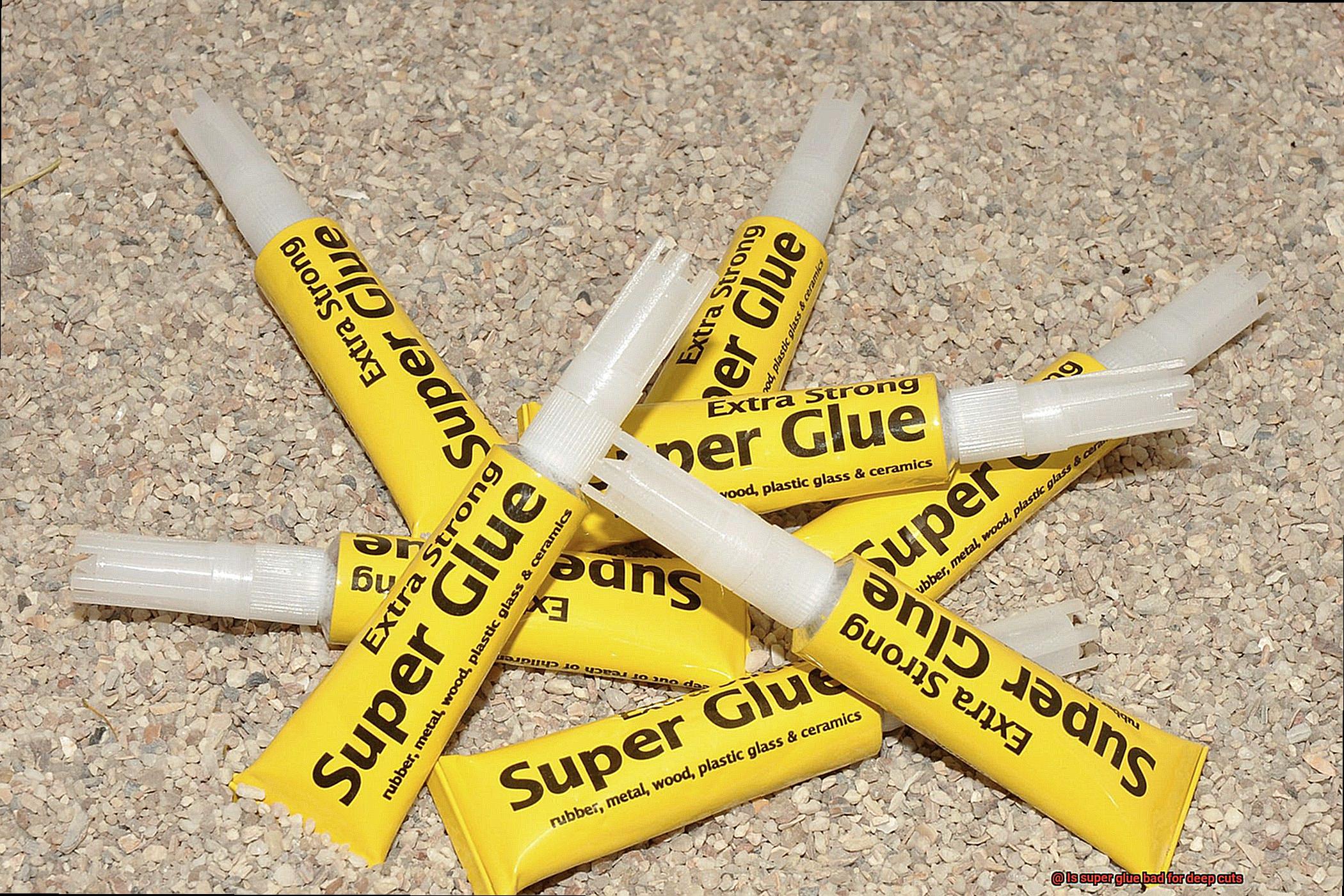
Why Super Glue Should Not Be Used on Deep Cuts:
- Toxicity and Skin Irritation: Super glue’s chemical composition can harm the skin or enter the bloodstream through an open wound.
- Infection Risk: Using super glue on deep cuts may trap bacteria or debris inside the wound, increasing the risk of infection.
- Impaired Healing Process: Super glue may impede the natural healing process by hindering proper cleaning and disinfection of the wound.
Seeking Professional Medical Attention:
- Proper Wound Closure Techniques: Medical professionals have access to specialized medical-grade adhesives designed for safe and effective wound closure.
- Cleaning and Disinfection: Healthcare professionals thoroughly clean and disinfect deep cuts to prevent infection.
- Expert Evaluation: Accurate assessment of the wound’s severity and appropriate treatment can only be done by medical professionals.
Benefits of Using Super Glue on Deep Cuts
Deep cuts can be intimidating, but there are situations where using super glue on these wounds can be surprisingly beneficial. In this blog post, we will explore the advantages of using super glue to seal deep cuts, including faster healing, reduced infection risks, and improved cosmetic outcomes.
Strong Bond for Faster Healing:
Super glue creates a robust adhesive bond that seals the edges of deep cuts, leading to more efficient healing. This bond acts as a protective barrier, preventing bacteria from entering the wound and reducing the risk of infection.
Hemostasis – Stop the Bleeding:
Super glue provides immediate hemostasis by sealing the blood vessels, effectively stopping bleeding. This makes it an effective first aid solution for deep cuts.
Convenience and Ease of Use:
Super glue is a convenient option for minor cuts that may not require immediate medical attention. Its quick-drying nature and easy application make it a handy tool to have in your first aid kit.
Reduced Scarring and Improved Cosmetic Outcomes:
Properly applied super glue effectively closes the edges of deep cuts, minimizing scarring and improving cosmetic outcomes. Its precise application allows for neat wound closure, providing peace of mind about long-term effects.
Avoiding More Invasive Procedures:
Using super glue on deep cuts may help avoid more invasive procedures like sutures. This saves time and reduces discomfort associated with traditional wound closure methods.
Risks of Using Super Glue on Deep Cuts
Using super glue on deep cuts may appear convenient, but it carries significant risks that should not be overlooked. While super glue is commonly used for non-medical purposes, it is not designed or approved for use on deep cuts. It is crucial to understand and consider these risks before using super glue as a quick fix.
One of the primary risks associated with using super glue on deep cuts is the increased potential for infection. Unlike medical-grade adhesives, super glue is not sterile. Applying it to a wound introduces bacteria that can cause infections. Proper wound care, including cleaning and disinfecting, is critical for preventing infections. Opting for medical-grade adhesives specifically formulated for wound closure can help minimize this risk.
Another risk to be aware of is the potential for skin irritation or allergic reactions. Some individuals may have sensitivities or allergies to the chemicals in super glue, leading to skin redness, swelling, itching, or blistering. To avoid adverse reactions, it is essential to test a small patch of skin before applying any adhesive to a deep cut.
Using super glue on deep cuts can also impede the natural healing process. The adhesive forms a hard barrier over the wound, preventing proper closure and healing. This can result in delayed healing or the formation of unsightly scar tissue. Medical-grade adhesives are specifically designed to allow wounds to heal naturally while providing support and minimizing scarring.
Additionally, using super glue on deep cuts can hinder healthcare professionals’ ability to assess and treat the wound effectively. The adhesive can interfere with thorough wound cleaning and may lead to complications or inadequate medical care.
There is also a risk of tissue damage when using super glue on deep cuts. The adhesive has the potential to cause a burning sensation or even chemical burns if it comes into contact with sensitive or delicate tissues.
Furthermore, if super glue is applied incorrectly or in excessive amounts, it can create a tight seal over the wound. This can lead to a buildup of pressure and fluid beneath the adhesive, causing discomfort, pain, and potentially further complications.
It is crucial to remember that specific medical-grade adhesives designed for wound closure are available. These adhesives are sterile, non-toxic, and biocompatible, minimizing the risks associated with using regular super glue.
Alternatives to Super Glue for Wound Closure
Proper wound closure is vital for promoting healing and preventing infection. While super glue may be a common adhesive in households, it is not recommended for wound closure, especially for deep cuts. Fortunately, there are several safe and effective alternatives that healthcare professionals use to ensure optimal healing. In this article, we will explore five alternatives to super glue for wound closure that provide support and promote natural healing.
Medical Adhesive Strips (Butterfly Closures):
For small to medium-sized cuts, medical adhesive strips, also known as butterfly closures, are a popular alternative. These non-woven strips have adhesive on both ends and are placed across the wound, gently holding the edges together. By providing support without hindering the natural healing process, butterfly closures promote efficient healing.
Sutures or Stitches:
Sutures or stitches are one of the oldest and most reliable methods of wound closure. This technique involves using a needle and thread to sew the edges of the wound together with precision. Sutures are commonly used for deep or large wounds, ensuring proper alignment of the skin for optimal healing.
Steri-Strips (Adhesive Skin Closures):
Similar to medical adhesive strips, steri-strips are sterile adhesive closures that prevent infection. These strips are effective for small to medium-sized cuts, offering support during the healing process. With easy application and removal, steri-strips provide a convenient alternative to super glue.
Tape Closure:
Wounds located on joints or areas with constant movement may require tape closure as an alternative. Specialized tape is used to hold the wound edges together while allowing flexibility and movement without compromising healing. Tape closure is an excellent option when traditional methods may not be suitable.
Tissue Adhesive:
Tissue adhesive, specifically designed for medical use, is commonly used in surgical settings as an alternative to super glue. Applied to superficial wounds, tissue adhesive creates a bond between the edges, promoting healing. When properly applied, tissue adhesive can be an effective option for wound closure.
How to Properly Use Super Glue on Deep Cuts
Super glue, also known as cyanoacrylate adhesive, can be a helpful temporary solution for sealing deep cuts. However, it is important to remember that super glue should only be used on clean and shallow wounds. In this article, we will learn how to properly use super glue on deep cuts to promote healing and prevent infections.
Assessing the Wound
Before using super glue on a deep cut, it is crucial to assess the severity of the wound. Super glue is suitable for minor to moderate cuts that are clean and have straight edges. It should not be used on jagged, dirty, or infected wounds as it can trap bacteria and hinder the healing process.
Deep cuts that are bleeding profusely or require stitches should be treated by a medical professional. Super glue is intended for temporary closure until proper medical care can be obtained.
Cleaning the Wound
The first step in using super glue on a deep cut is to clean the wound thoroughly. Gently wash the area with mild soap and water, and remove any debris or foreign objects using tweezers. It is essential to ensure that the wound is completely dry before applying the glue.
Cleaning the wound helps prevent infections and promotes proper healing. Make sure to clean not only the surface of the cut but also the surrounding skin.
Applying the Super Glue
To apply the super glue, gently hold the edges of the cut together and apply a small amount of glue along the length of the wound. Be careful not to get glue directly into the cut, as this can cause irritation and delay healing. Instead, create a thin layer over the surface of the wound to seal it shut.
The goal is to bring the edges of the cut together in order to promote proper healing and minimize scarring. Apply the glue in a controlled and precise manner, ensuring that it covers the entire length of the cut.
Allowing Proper Bonding
Once the glue has been applied, hold the edges of the cut together firmly for at least one minute to allow it to bond properly. Avoid moving or stretching the area during this time as it can disrupt the adhesive process.
Proper bonding is essential for effective wound closure. By holding the edges of the cut together, you ensure that the glue sets and forms a strong bond, providing stability and protection.
Protecting the Wound
After the glue has dried and formed a strong bond, it is crucial to protect the wound from further contamination. Apply a sterile adhesive bandage or dressing over the glued area to keep it clean and prevent any accidental dislodgment.
The bandage or dressing acts as an additional barrier against dirt and bacteria. It also helps absorb any excess moisture and provides cushioning to minimize discomfort.
When Should You Seek Professional Medical Attention?
Knowing when to seek professional medical attention for a deep cut is crucial. While super glue can be a convenient solution for minor wounds, there are certain circumstances where it is not sufficient and medical intervention is necessary.
First and foremost, the depth of the cut plays a significant role. If the cut extends beyond the superficial layers of the skin, it is advisable to seek medical attention. Deep cuts have the potential to damage underlying tissues, muscles, tendons, or even bones, requiring a healthcare professional’s assessment and appropriate treatment.
The location of the cut is another important consideration. Some areas of the body are more prone to complications and infections than others. Cuts near joints, major blood vessels, or vital organs should be evaluated by a medical professional to ensure no significant damage or risk of further complications.
Additionally, the cause of the cut should be taken into account. If the injury was caused by a dirty or contaminated object, such as a rusty nail or a dirty knife, there is an increased risk of infection. Seeking medical attention in these cases is crucial as healthcare professionals can thoroughly clean and disinfect the wound to prevent infection.
Furthermore, if a deep cut continues to bleed profusely even after applying pressure for an extended period, it is clear that medical attention is necessary. Excessive bleeding could indicate damage to major blood vessels or an underlying medical condition that requires immediate attention.
When seeking professional medical attention for a deep cut, it is important to note that rushing to the emergency room may not always be necessary. In many cases, visiting an urgent care center or scheduling an appointment with your primary care physician can suffice. These healthcare providers can evaluate the injury, provide stitches if necessary, and offer proper wound care instructions.
Tips for Preventing Deep Cuts
Deep cuts can be excruciatingly painful and can lead to serious complications if not promptly treated. That’s why it’s crucial to take preventive measures to avoid deep cuts and promote overall safety awareness. By implementing these tips, you can safeguard yourself and others from the risks associated with deep cuts.
Handle sharp objects with caution:
When wielding sharp objects like knives or scissors, always exercise caution. Use the appropriate tools for specific tasks, such as employing a cutting board when chopping food. Remember, sharp blades are safer than dull ones, as they reduce the likelihood of slips and deeper cuts.
Wear protective gear:
Engaging in activities that could result in deep cuts necessitates wearing suitable protective gear. This may include gloves, goggles, or even full-body suits, depending on the task at hand. Protective gear acts as an impenetrable barrier between sharp objects and your skin, significantly reducing the risk of severe cuts.
Maintain a clean and organized workspace:
A cluttered workspace amplifies the chances of accidents and deep cuts. Keep your work area spotless and well-organized, storing sharp objects in designated places. This precaution minimizes potential hazards and prevents accidental contact with sharp objects.
Utilize proper hand positioning and grip:
When working with sharp objects, always adopt proper hand positioning and grip techniques. This ensures better control and reduces the risk of slips or accidental cuts. For instance, when wielding a knife, firmly hold it with your fingers curled under and the blade facing away from you.
Take breaks when fatigued:
Fatigue impairs concentration and coordination, increasing the likelihood of accidents and deep cuts. If you’re feeling tired or mentally drained, take breaks and allow yourself to rest before resuming potentially dangerous tasks. This helps maintain focus and reduces the risk of making mistakes that could result in severe injuries.
VlOVnfN3vSE” >
Conclusion
In conclusion, it is crucial to recognize the potential dangers and limitations associated with using super glue on deep cuts. Although it may seem like a quick fix, super glue is not intended for medical use and can have detrimental effects on the healing process.
The risks of utilizing super glue on deep cuts are significant and should not be taken lightly. Toxicity and skin irritation, an increased risk of infection, hindered healing, tissue damage, and potential complications are all primary concerns. Medical professionals strongly advise against relying on super glue for deep cuts when there are sterile, non-toxic medical-grade adhesives specifically designed for wound closure readily available.
Rather than resorting to super glue, seeking professional medical attention is the recommended course of action for deep cuts. Healthcare providers possess the necessary expertise to employ proper wound closure techniques such as sutures or stitches. They also have access to specialized medical-grade adhesives that ensure safe and effective wound closure. Additionally, healthcare professionals can thoroughly cleanse and disinfect deep cuts to minimize the risk of infection.
While there may be instances where using super glue on minor cuts can offer benefits such as faster healing, reduced infection risks, convenience, and improved cosmetic outcomes, it is vital to understand that these advantages do not extend to deep cuts.
Ultimately, prioritizing your health means seeking appropriate medical care for deep cuts.

